When the streets of Las Vegas host a Grand Prix later this week, it will be the culmination of five years of detailed planning and hard work. The return of Formula 1 to the self-proclaimed entertainment capital of the world will attract global attention. Starting at 2200 local time on Saturday, November 18, the Las Vegas Grand Prix will be unlike any other event on the calendar.
“When you consider the speeds the cars will reach, with the backdrop of the nightlife that is Las Vegas – there will be no spectacle like it on Earth,” says Renee Wilm, CEO of the Las Vegas Grand Prix, Inc.
As the excitement builds for the sport’s third foray into the USA this year, what challenges were overcome for the city to return to the F1 calendar after a break of 41 years?
IT’S RACE WEEK: 5 storylines we’re excited about ahead of the 2023 Las Vegas Grand Prix
Utilising the Strip in the track layout
The feasibility of a new race in Vegas was first touted back in September 2018, with a site visit two months later. In total, 23 different configurations of circuit were mapped out across the city before a final decision was made in early 2022 on the 3.8-mile, 17-turn route that will be raced on come Saturday night.
This time around, every layout drawn included a section of track on the Strip, the iconic boulevard that traverses through the heart of Las Vegas, flanked by famous casinos, hotels and restaurants. It’s a significant departure from the two Grands Prix held in the parking lot of Caesars Palace in 1981 and ’82.
“The Strip was the selling point. A Las Vegas Grand Prix without that iconic backdrop wouldn’t have made sense and every major casino and hotel owner could see that,” says Craig Wilson, Head of Vehicle Performance at Formula 1, who worked closely with track designers Tilke to create the route.
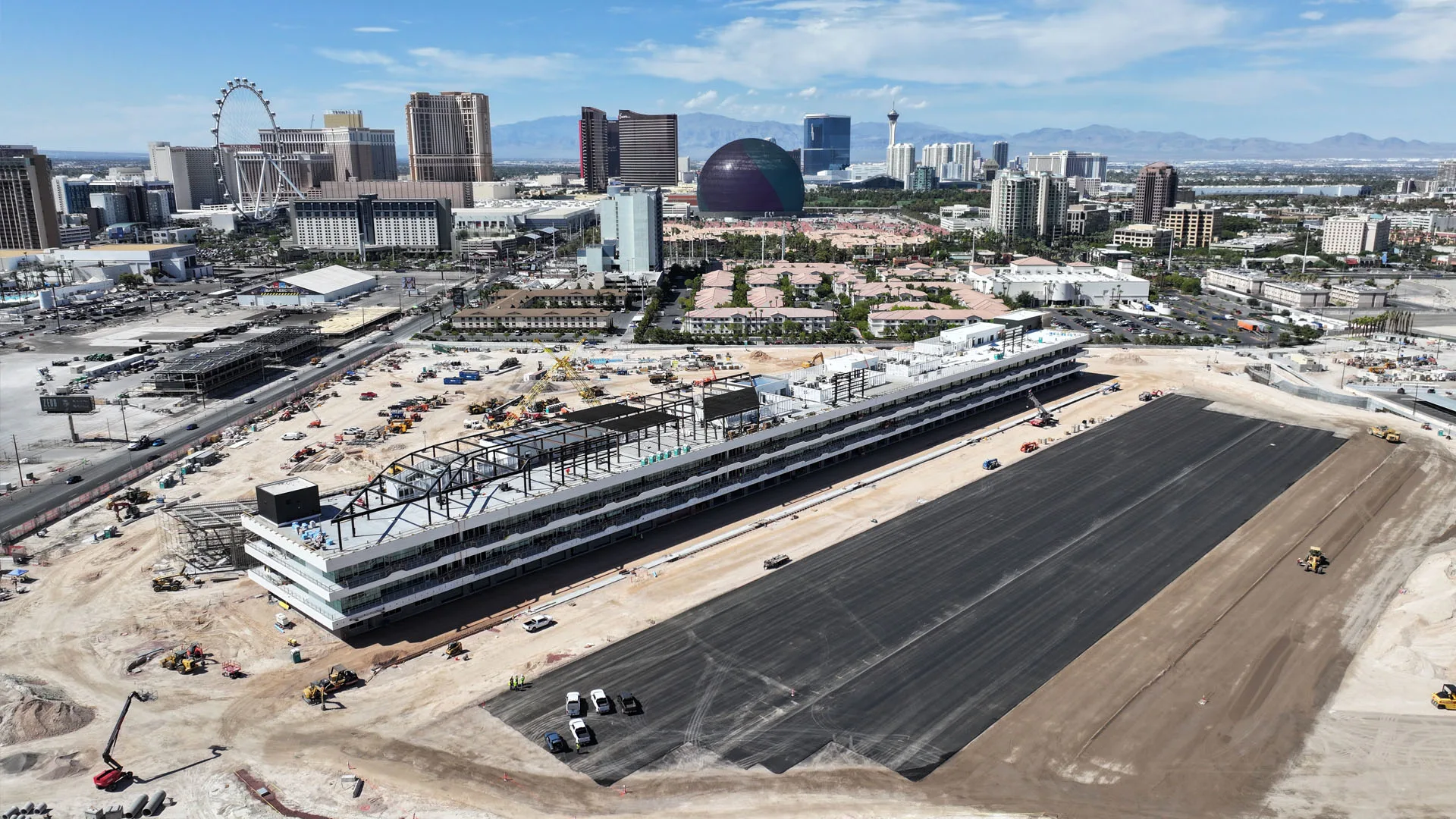
“Then it was a case of convincing the stakeholders, local government and Clark County on how feasible it would be as we explained the build length, the time the roads would be closed and how long everything would return to normal.”
THE STRATEGIST: How do the teams plan for a new race like Las Vegas with no historic data?
When the final layout was decided, the section of circuit utilising the Strip totalled 1.18 miles in length. From the cockpit, drivers will be on full throttle for 21 seconds and speeds are estimated to be between 208-217mph.
“As we went through simulations, we could see that it was starting to look really fast, potentially down to Monza-wing levels,” adds Wilson. “That will be unique for a street circuit.”
Minimising disruption to the city
When deciding on the route of the circuit, one of the key considerations for Formula 1 was the impact it would have on access to the hotels and resorts in the city. With Geobrugg concrete blocks and safety fencing in place, it will effectively landlock the infield.
PALMER: How do F1 drivers prepare for an all-new race like Las Vegas?
“The main challenge we had was creating access routes internally and externally around the centre,” continues Craig Wilson at F1. “How do we continue to get people in and out of the major hotels during check-in and check-out times? We also need emergency access. So we looked at whether we needed to build tunnels, but settled on a large temporary ramp bridge [over Flamingo Road] and with the help of Tilke did a lot of traffic management modelling.”
Added to the logistical challenge was the tearing up of nearly four miles of streets in one of the biggest entertainment zones in the world. The top four to six inches of asphalt were removed and the entire route has been repaved. The hope is that the new surface will have a six-year lifespan.
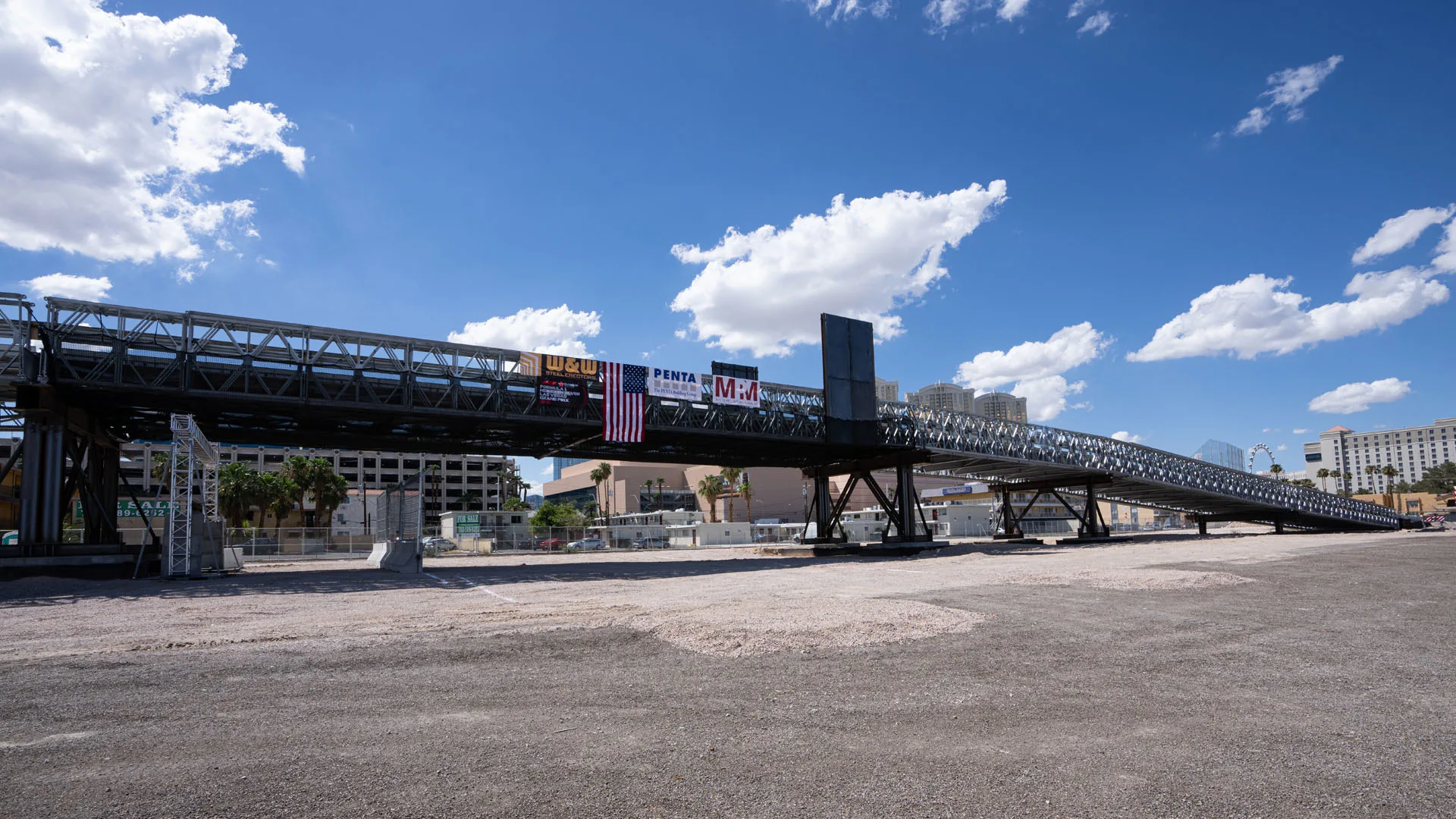
“We did a lot of work at night, but that’s difficult in a city that never sleeps!” says construction boss Terry Miller, of Miller Project Management. “It’s impossible not to disrupt some businesses, but we had a lot of help from the local police department and Clark County to help navigate intersections and close roads. But it’s been a delicate process to be flexible so that property owners can make adjustments so that customers can still access their facilities.”
Movement in and out of the city during the race weekend in part explains the late timetable and why there are no support races, as the circuit will re-open to the public each day of the event.
Buying land to build the pits
Unusually in the case of Las Vegas, the sport’s owners Liberty Media are the promoter for this race. The US company has its sights on having a long-term presence in Las Vegas and to emphasise the point committed to buying a piece of land – with the start/finish line on a site once occupied by a nightclub.
The land purchase has allowed Formula 1 to build a permanent, state-of-the-art pit building which is the length of three football fields. Above the garages is a 300,000 sq ft Paddock Club on three levels (including roof terrace) that will accommodate 8,000 guests.
“When you construct a football stadium, it’s essentially a four-year process,” says Miller. “The design is about a year and a half. Then you find a contractor who will build it at the price you want. Then it can take two and a half years to construct. Everything I’ve described we did in about 14 months.”
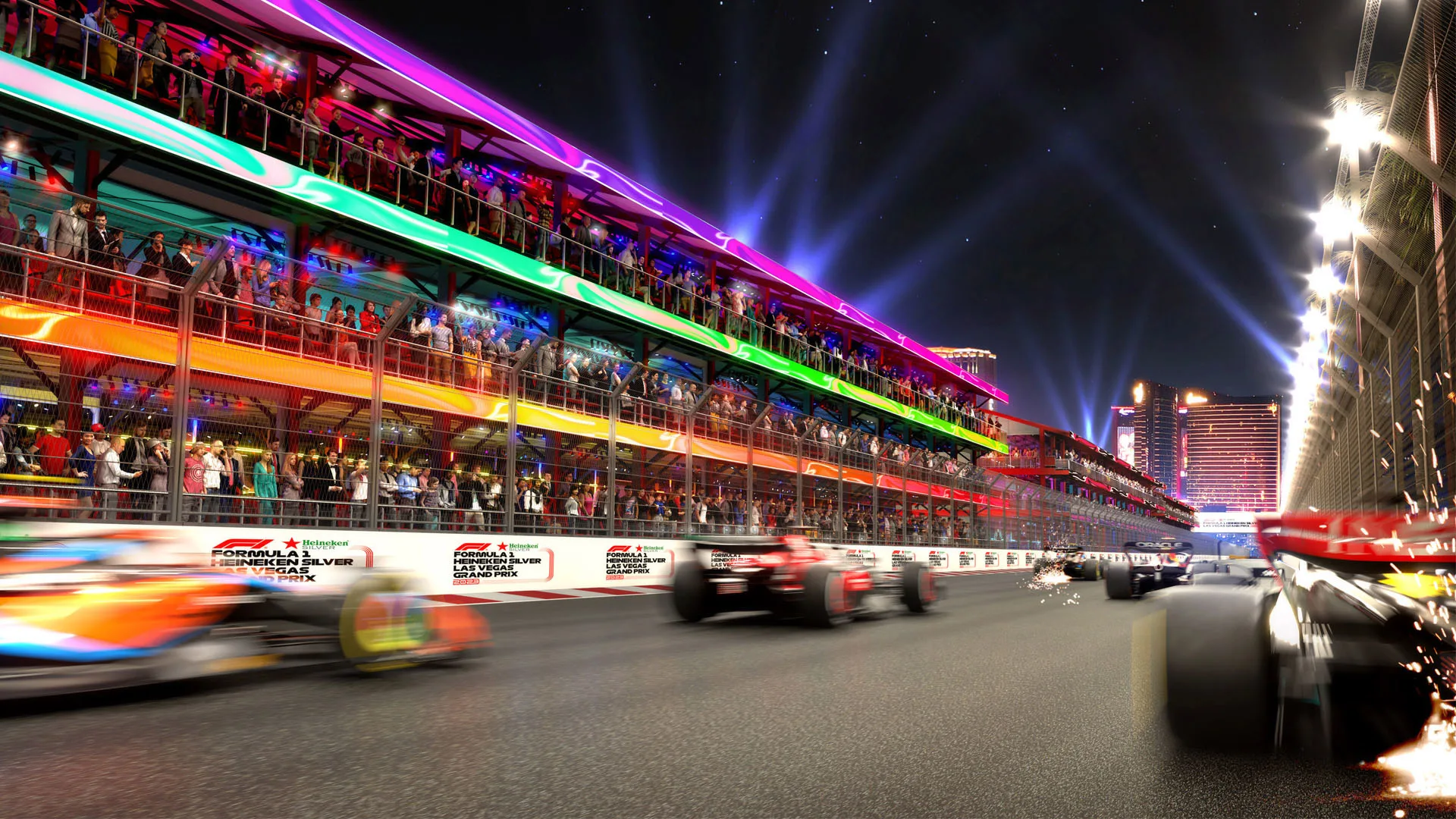
On acquiring the land, a slope of 25 feet was levelled up, and during that process the 400+ construction team inserted a pedestrian tunnel from the paddock side to the grandstand opposite. But that came with its own issues as they carefully navigated the underground water and electricity utilities.
With materials for construction sourced to adhere to strict sustainability practices, the organisers have also implemented a water conservation programme whereby an atmospheric water generator captures vapour to offset outdoor water usage throughout the race weekend.
The greatest show on Earth?
Understandably there is a lot of hype surrounding Las Vegas, which will host the first Grand Prix on a Saturday since South Africa ’85. The week of entertainment starts on Wednesday night with a live show featuring all 20 drivers and A-list music acts on the starting grid, part of which rounds the final corner (think of the grid at Woodcote on the old Silverstone layout).
READ MORE: Everything to know about the Netflix Cup – Confirmed pairings, timings and how to watch
Ticketed grandstand seats total 105,000 each day, but many more spectators will occupy the numerous fan zones and hospitality suites managed by a number of the hotels.
“Our Opening Ceremony will rival the Super Bowl half-time show, and it will kick-off what we hope will be a 20,30, 40-year event that will continue to up the ante year-on-year in Las Vegas,” says LVGP promoter CEO Renee Wilm.
“The Sphere is going to be an incredible place to watch the race. We have acts such as J Balvin, Kylie Minogue and Mark Ronson throughout the weekend. Our caterer is Wolfgang Puck and that’s included in grandstand and general admission – free food at any time has never been done anywhere on the F1 calendar before.
F1 EXPLAINS: New track preparations, pit lane positions and AI strategy – Your questions answered
“We’re creating a new legacy here, around the concept of Las Vegas being the sports and entertainment capital of the world,” adds Wilm. “The eyes of the world will be on this event.”
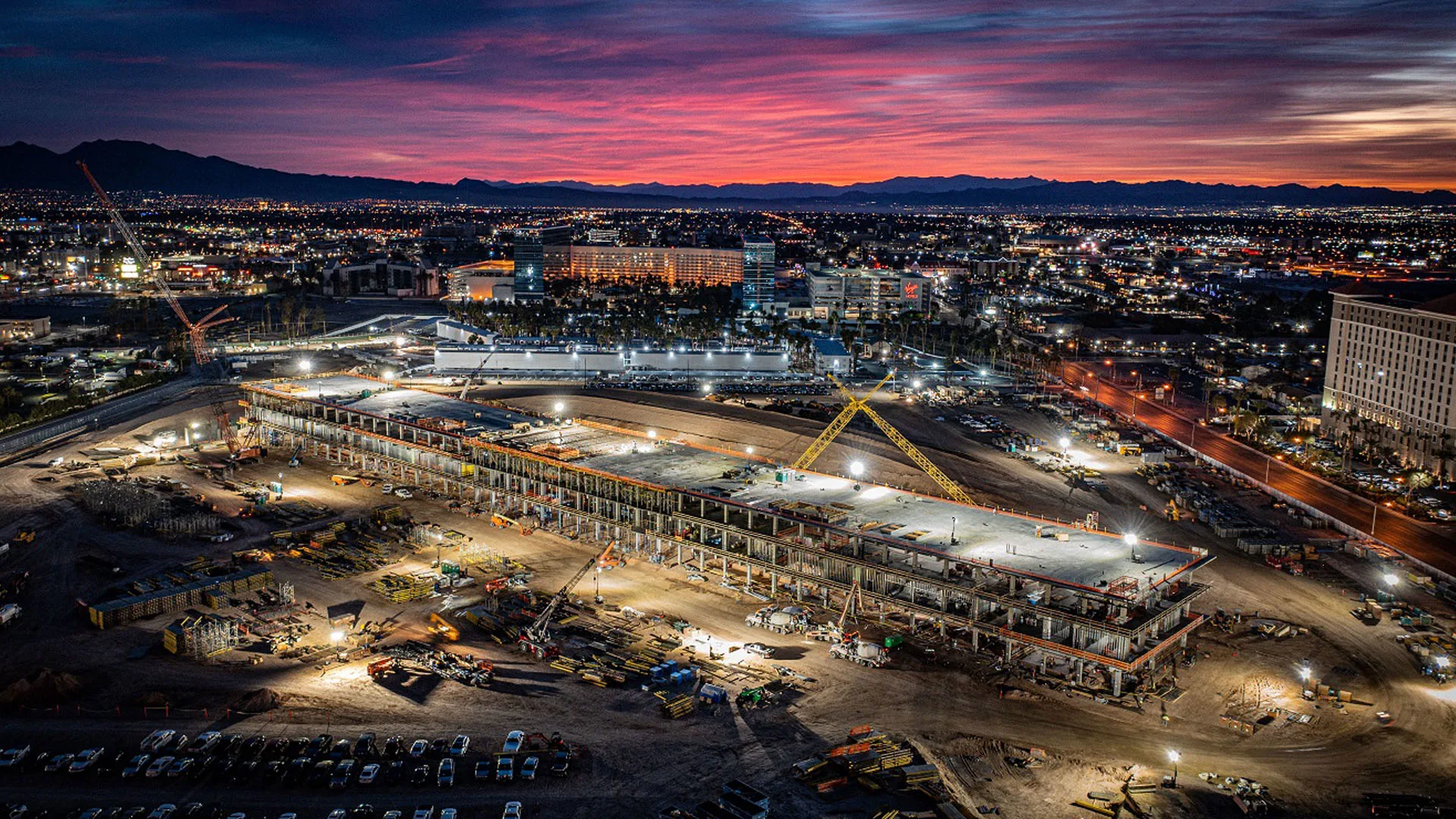


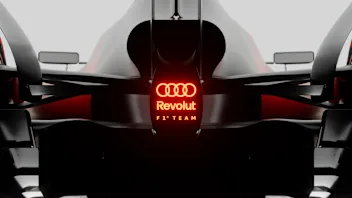
.webp)

